
Seiji revisits his musician roots while discovering how the individuals of one local community have built a lasting celebration of music and family.
There are times when going to work at the SoraNews24 office in the middle of Tokyo’s busy Shinjuku district can be a bit of a drag. Our Japanese-language correspondent Seiji Nakazawa was in one of those moods when he caught wind that a musician friend of his was working to revive a daylong outdoor music festival begun in 2016 called Soraniwa (meaning “Sky Garden”–no affiliation to our site) in the mountains of the Fujino region in the town of Sagamihara, Kanagawa Prefecture. COVID had put a temporary stop to the annual event but the organizers were determined to hold it again in 2022. Seiji took this opportunity as the perfect excuse to escape the big city and join the team on their first day of preparations for this year’s event.
▼ Here’s a video of the 2019 Soraniwa Festival
Outdoor music productions aren’t easy to pull off and require a lot of coordination. This time, however, one of the Soraniwa organizing committee members is a seasoned veteran of the music industry. Yachiko serves as the vocalist for a band called sjue, and Seiji had gradually gotten to know her at various live houses and battle-of-the-band type events over the past decade through his side career as a musician. Despite many other singers disappearing like the tide year after year, Yachiko had been a constant fixture in the local music scene.
It had been a while since Seiji had last seen her, but she came to greet him at one of the train stations closest to the Soraniwa venue, Uenohara Station. She still seemed just like the Yachiko in his memories. She had just finished copying some flyers for the festival at the local community center.
▼ Yachiko
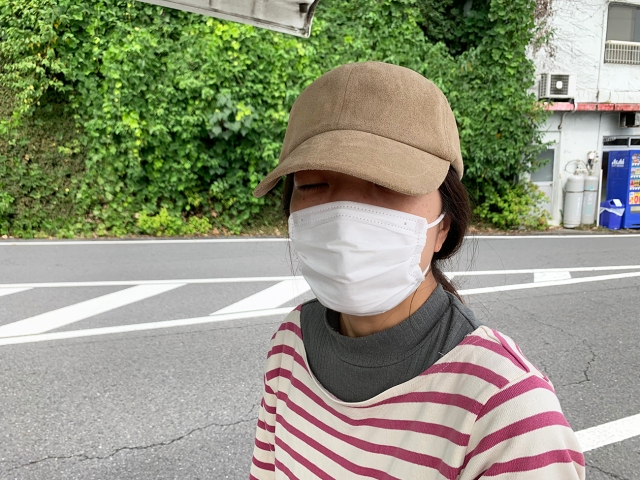
Yachiko then explained the origins of Soraniwa. She began by saying that Fujino is a place that experienced a boom in people moving to the area a generation before the current uptick in city dwellers moving to rural areas. It was easy for someone like her to move there as well and blend right in. She liked the atmosphere and developed the idea for Soraniwa with her local singer-songwriter friend Annasekai. The original inspiration came when the two of them visited some nearby hot springs and thought it would be fun while chatting to hang out with a bunch of people with music. In short, Soraniwa is an extension of that conversation–it’s a festival where friends can gather together and enjoy each other’s company. Maybe it was inevitable that Seiji had ended up there as well. He likened himself and others to pieces of driftwood washing up on shore.
The two of them then drove into the mountains together in Yachiko’s van, following a country road until they reached an open space with a pleasant view. There they met up with the small group that composed the festival’s organizing committee, who were eating lunch under a gazebo.
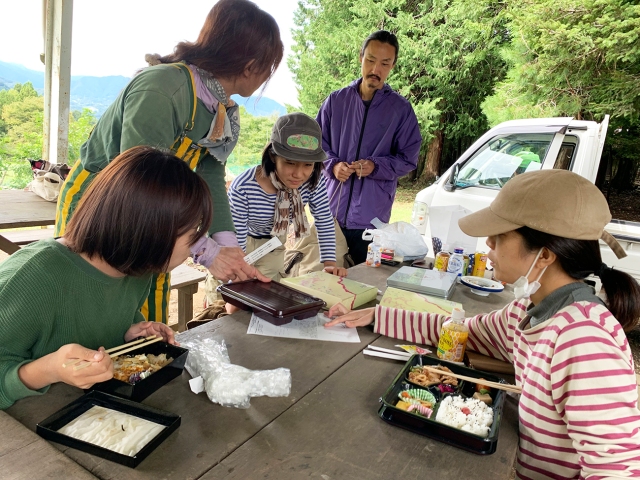
There was something about the aura of one member of the group that struck Seiji as being exceeding familiar–a man who went by Makken, so he struck up a conversation with him first to find out how he got involved in Soraniwa.
Makken: “Previously I was in a band in Tokyo but I moved here in 2017. Right around that time I went to see a stage performance and saw a flyer for Soraniwa. It looked interesting. The festival sponsors were openly recruiting bands to perform and I was happy that they knew of my band.”
Perhaps Seiji and Makken had just missed each other while performing in Tokyo, but it seemed like fate that they would run into each other now in the mountains of Kanagawa.
▼ Makken
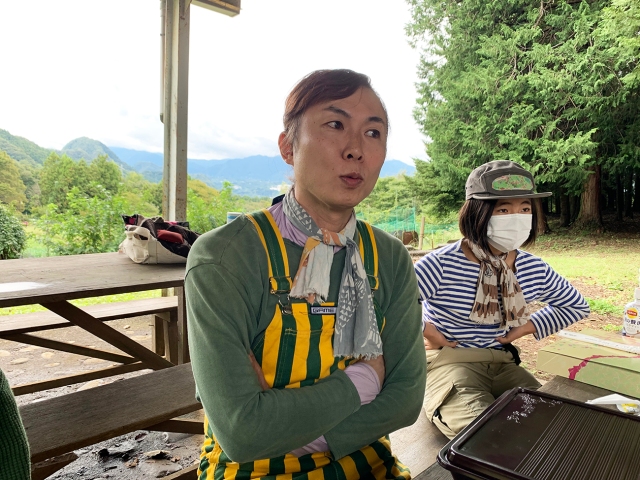
Once lunchtime ended, they all walked along a local farm road to reach the site of the venue.
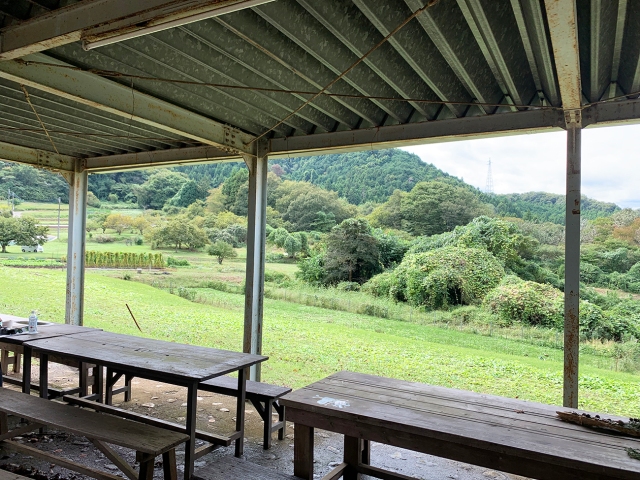
Being a natural space, the first steps for readying the outdoor venue were to cut back a lot of the overgrown vegetation. Makken got right to work with his weed trimmer as if he had done this a thousand times before.

It wasn’t only the grass that needed a shave but the encroaching bamboo thicket, too.

A man named Kuni, who looked to be about Seiji’s age, was chopping away vigorously at the bamboo. This would also be his first year participating in the festival, and Seiji dubbed him “Bamboo Cutter Kuni” because it had a nice ring to it. He soon found out that Kuni used to work at a very well-known advertising firm. So how in the world had he ended up here?
Bamboo Cutter Kuni: “I felt restless at the thought of working at the firm for the rest of my life. I wanted to get a taste of some other worlds, so I dropped out in my 30s and actually traveled around the world. At the same time I got closer to nature and realized that I felt most at peace when eating things that I grew from the ground with my own hands. I came to this area about a year and a half ago so I haven’t experienced Soraniwa yet. I believe a community where everyone helps each other out is important, so I’m lending a hand here and there.
I strongly believe that it’s possible to have a society with victories and defeats rather than one with individual winners and losers. A society where everyone’s happy and at peace–I’d like to spread that message to the world from Fujino.”
Seiji decided that Bamboo Cutter Kuni was the representative hippie of the group.
▼ Bamboo Cutter Kuni
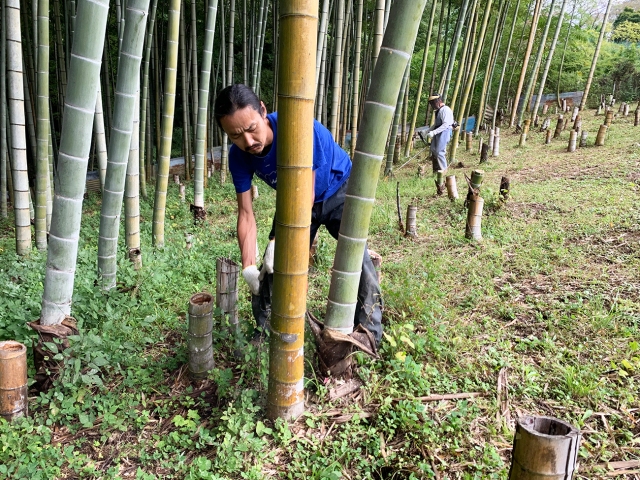
Next up was Batako, who was carrying the fallen bamboo and doing various other chores. She’s a nursery school teacher, a job which usually implies a more stable lifestyle than being a professional musician or wandering world traveler, so Seiji was curious to hear from her how she had drifted here.
Batako: “I was originally in Chigasaki, Kanagawa Prefecture near the ocean but was having a rough time at work. I ended up coming to Fujino, and thanks to all the kind people I’ve met here, I’m doing better these days. When I got more involved in the local community I got to know Annasekai and was invited to Soraniwa. At that time I had a mental image of what the festival would be like, but when I actually experienced it, it was even better than I had imagined. There are years when things are tight but it’s always the kind of event that you can’t imagine until you’re there. To me, Soraniwa is a chance for self-expression.”
Upon hearing her words Seiji thought that the fact that someone like Batako blended in as a core member of the group was a reflection of the festival’s true welcoming atmosphere.
▼ Batako
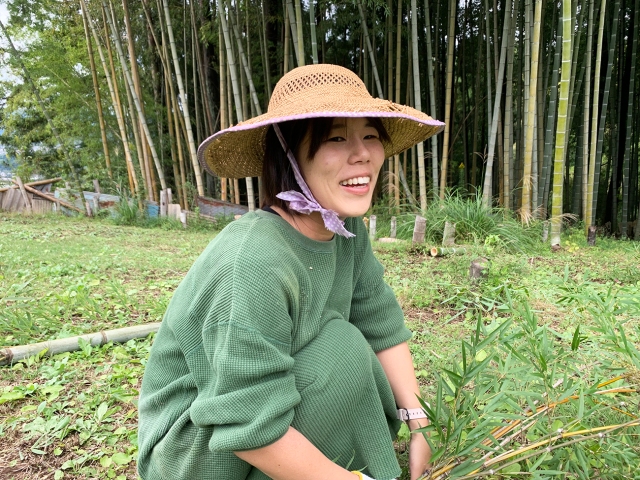
Seiji then proceeded to snap a few photos while Yachiko and the others were absorbed in their work.
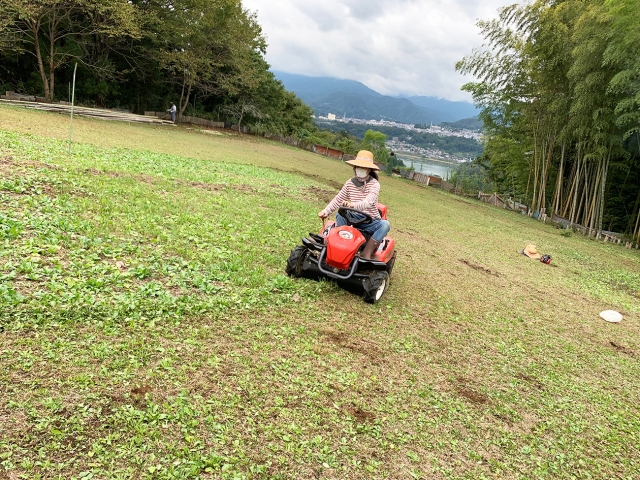

After about two hours the group had finished the preliminary work of trimming and burning the cuttings and gathered again as a group. According to Isowa, the member in charge of building the stage, it would be about four meters (13.1 feet) long and take three days to construct the base. They would then assemble the rest of the structure the day before the festival. In particular, the team discussed which individuals to reach out to for help with meals on the days of assembly leading up to the event.
Figuring out the food definitely seemed like the most important thing to settle from the start since there were no local convenience stores they could pop over to. Seiji felt that realizing this kind of thing is a priority is something that you’d only know if you’ve messed up in a similar situation before.
▼ Isowa
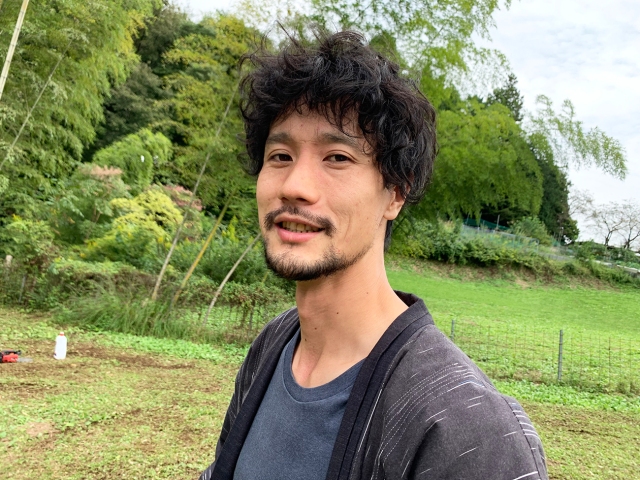
Interestingly, something he noticed once all of the committee members joined the meeting was that they really looked like one big family.
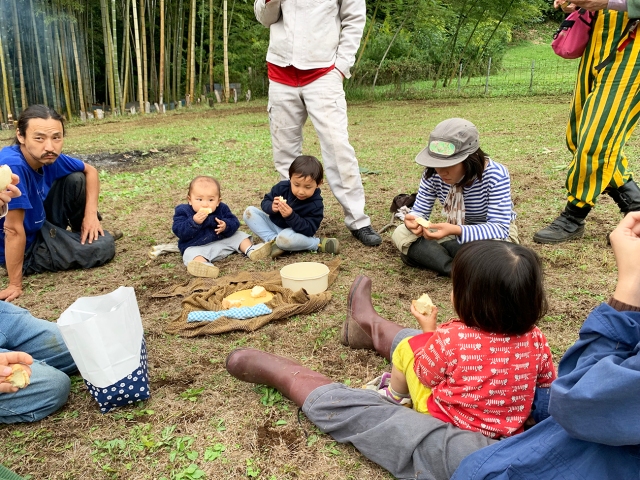
Actually, Annasekai is the mother of two small children and Makken’s kids were also there with him. Someone observing from a distance would likely guess that this outdoor festival planning meeting was simply a meetup for kids.
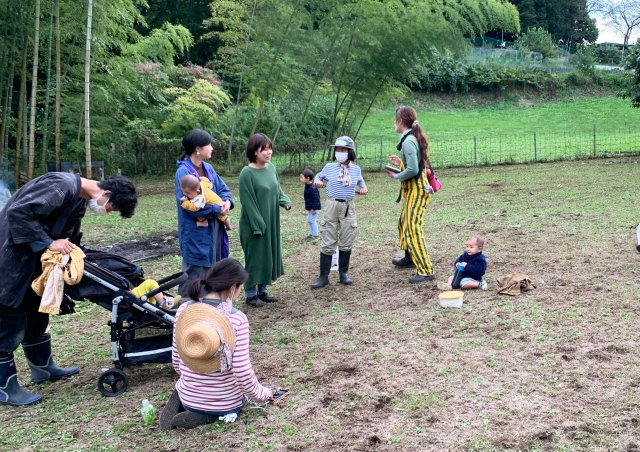
Seiji took the opportunity to chat with Annasekai for more details about when she Yachiko had originally envisioned Soraniwa.
Annasekai: “At first, my and Yachiko’s vision for the festival was taken from Icelandic band Sigur Rós’s live DVD Heima. We thought it would be awesome to have a high stage and children all around. On top of that, I had been to the Fuji Art Harvest Festival Komoriku when I was little and have wonderful memories of playing tag with friends around the various events held by local Fujino artists.
Soraniwa is based on those two big concepts. It’s a space made for adults by adults, but children also have plenty to enjoy.”
Intrigued, Seiji asked her to share more about the Komoriku festival.
Annasekai: “It was one day when the artists of Fujino gathered together to have fun outdoors. There was some kind of stage in the forest as well. It was the event that really put Fujino on the map, and since my parents are musicians, that kind of thing always felt natural to me. The last time was the time I came back to Fujino.
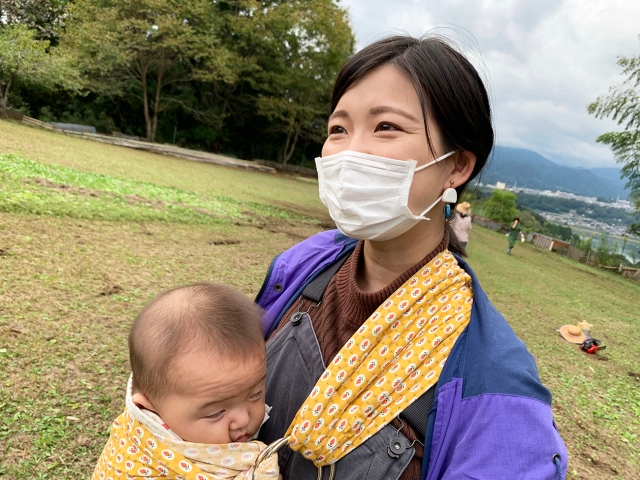
I actually lived in Koenji, Tokyo for a bit because I wanted to experience getting out of the country once. I think I also met Yachiko around that time. After a while, though, Tokyo became hard to live in, so I returned. However, all of the scenes that were familiar to me were gone. Therefore, one of my goals for Soraniwa is to carry on all of these important memories of Fujino into the future.”
Seiji was also pleased to learn that the festival had received a subsidy from the local government, and the organizers have already applied for aid for next year’s event to continue this important mission. As someone who was in a band for 15 years and has grown older with his music, Seiji particularly resonated with Annasekai’s words.

And so, the first day of Soraniwa 2022 preparations came to an end. Yachiko’s last task of the day was to go and greet the local landowner whose land they were borrowing, so Seiji decided to tag along. The festival space is usually farmland, and they’re allowed to use it in exchange for clearing out weeds and undergrowth three to four times per year.
Yachiko’s van pulled up to the owner’s house just as the sun was setting. He and his wife were serving lucky red rice with beans and tempura as part of the traditional autumn moon-viewing celebration that just so happened to be taking place that night. The owner invited Seiji and the other them to join him for food in the garage.
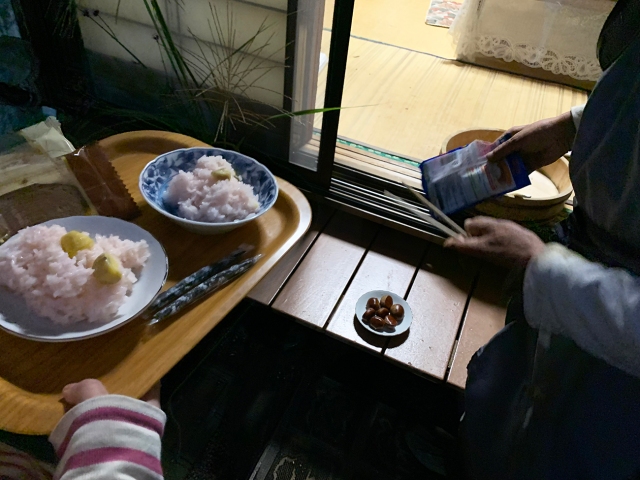
Seiji wasted no time in hearing the owner’s thoughts.
Landowner: “There are many people in the city who think about sustainability only in terms of themselves. However, any time you use nature for something, you must also take into consideration that there are people living there. We need to think about the sustainability of the region before yourself, right? Even if you hold an event, it’s not sustainable if you make a mess and then go home. That’s why I’m happy to lend the land for the festival in exchange for them cutting the grass three or four times per year.”
Listening to the owner’s words, Seiji once again was impressed by how Soraniwa is a event that’s truly built on mutual trust and respect. As further proof of this, the organizing committee continued to cut the grass even throughout the pandemic when the festival couldn’t be held.
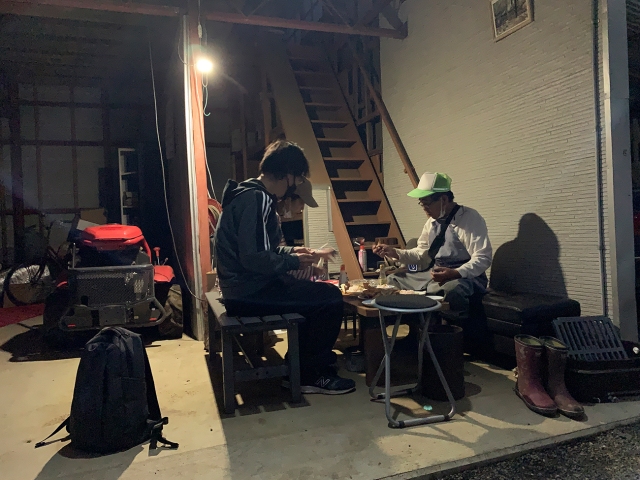
We’d like to leave you with one last scene that left a big impression on Seiji from earlier in the day. While everyone was in the middle of working, a passerby had stopped and asked excitedly, “Are you going to hold it this year?!” While it may not be anywhere near the grand scale of the Fuji Rock Festival, this exchange is illustrative of the fact that Soraniwa has already become an important tradition etched into the minds of the locals.
This year’s 2022 Soraniwa Festival will be held on Saturday, October 29. Admission is free and Seiji will also be on hand to help out with the parking. Go say hi to everyone you’ve met above if you’ll be in the area!
Festival information
Soraniwa 2022 / そらにわ 2022
Address: Kanagawa-ken, Sagamihara-shi, Midori-ku, Nagura 3983 (behind Kuzuhara Shrine)
神奈川県相模原市緑区名倉3983 (葛原神社 奥)
Duration: 11 a.m.-5 p.m.
Reference: Twitter/@tutinoko_fujino
All images © SoraNews24
● Want to hear about SoraNews24’s latest articles as soon as they’re published? Follow us on Facebook and Twitter!

No hay comentarios:
Publicar un comentario